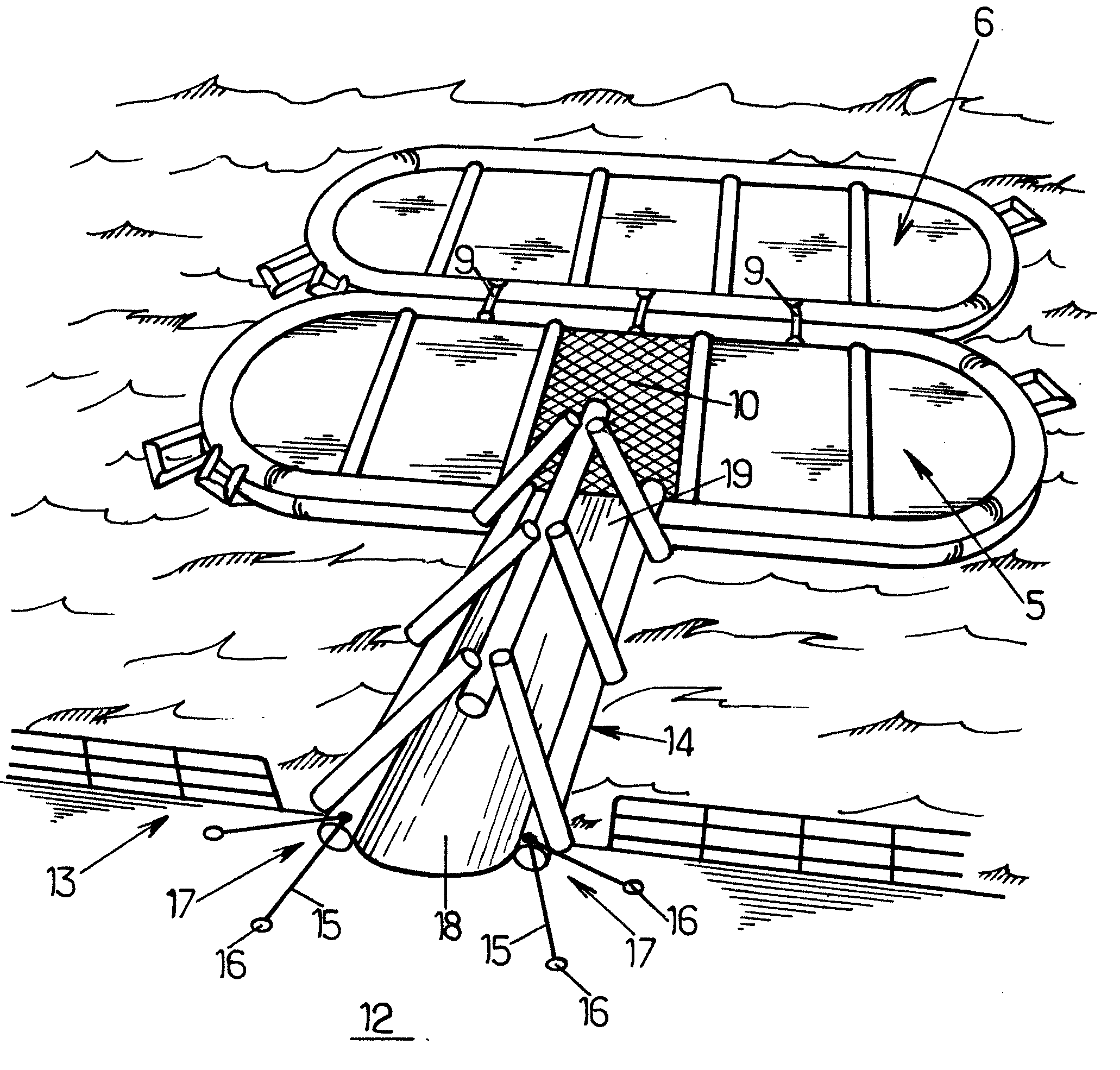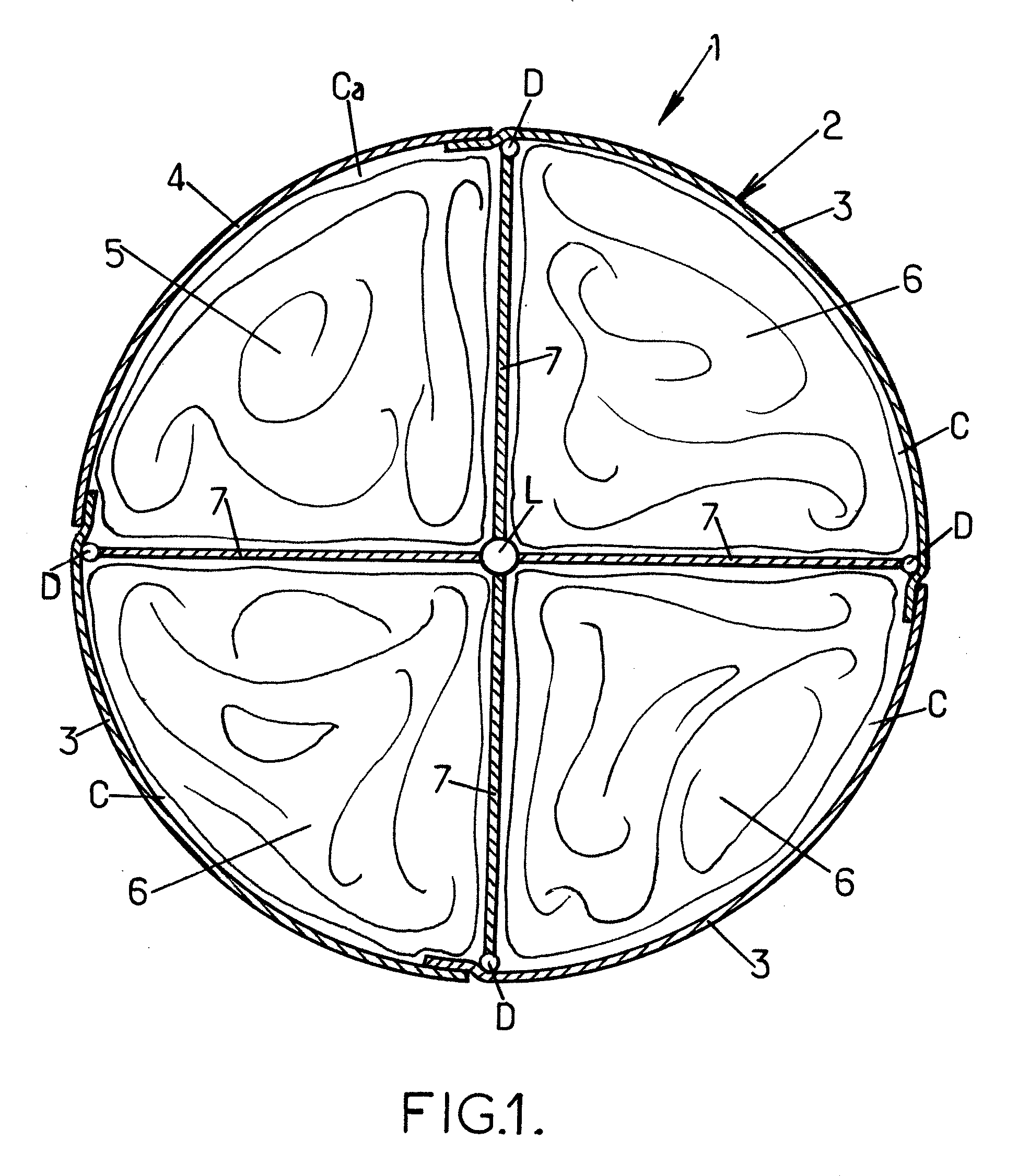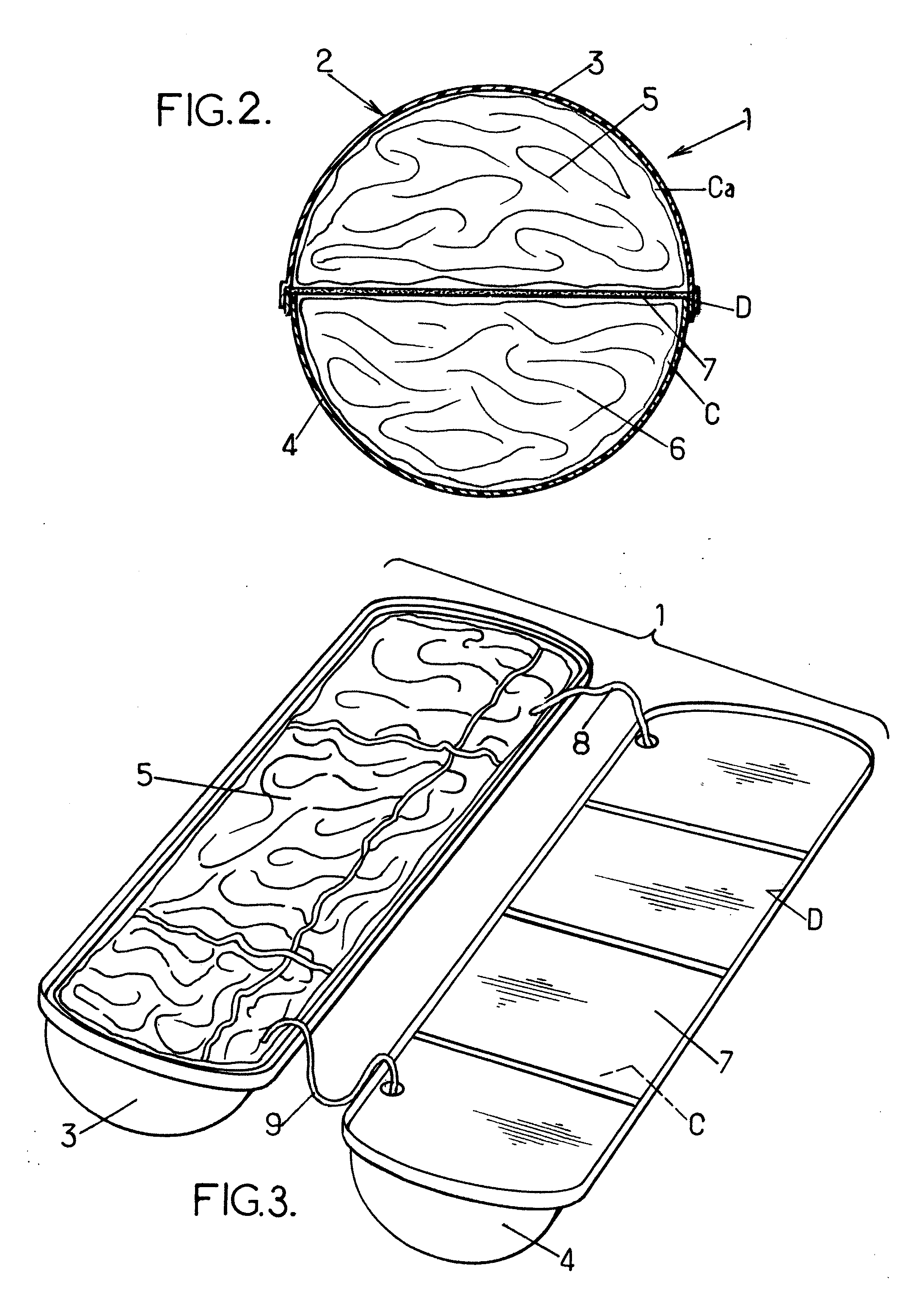Sea survival device including several pneumatic liferafts
- Summary
- Abstract
- Description
- Claims
- Application Information
AI Technical Summary
Benefits of technology
Problems solved by technology
Method used
Image
Examples
Embodiment Construction
[0036]Reference is made firstly to FIG. 1 which is a highly diagrammatic view of a sea survival device that is designated by overall numerical reference 1, and that comprises a container 2 enclosing several pneumatic liferafts in the deflated and folded-up state together with suitable inflation means for inflating said liferafts. In accordance with the invention, the sea survival device 1 is arranged as explained below.
[0037]The container 2 is made up of several assembled-together rigid shells 4, one of which is a special shell 3 that is described below. The shells 3, 4 can be made of any suitable material used for manufacturing containers designed to enclose liferafts, and the shells are shaped in a manner such that the container 2 has any desired shape that is appropriate for performing its function; the shells 3, 4 are mechanically assembled together in a manner such as to impart the required strength to the container, in particular if it is designed to be thrown into the water f...
PUM
 Login to View More
Login to View More Abstract
Description
Claims
Application Information
 Login to View More
Login to View More - R&D
- Intellectual Property
- Life Sciences
- Materials
- Tech Scout
- Unparalleled Data Quality
- Higher Quality Content
- 60% Fewer Hallucinations
Browse by: Latest US Patents, China's latest patents, Technical Efficacy Thesaurus, Application Domain, Technology Topic, Popular Technical Reports.
© 2025 PatSnap. All rights reserved.Legal|Privacy policy|Modern Slavery Act Transparency Statement|Sitemap|About US| Contact US: help@patsnap.com



